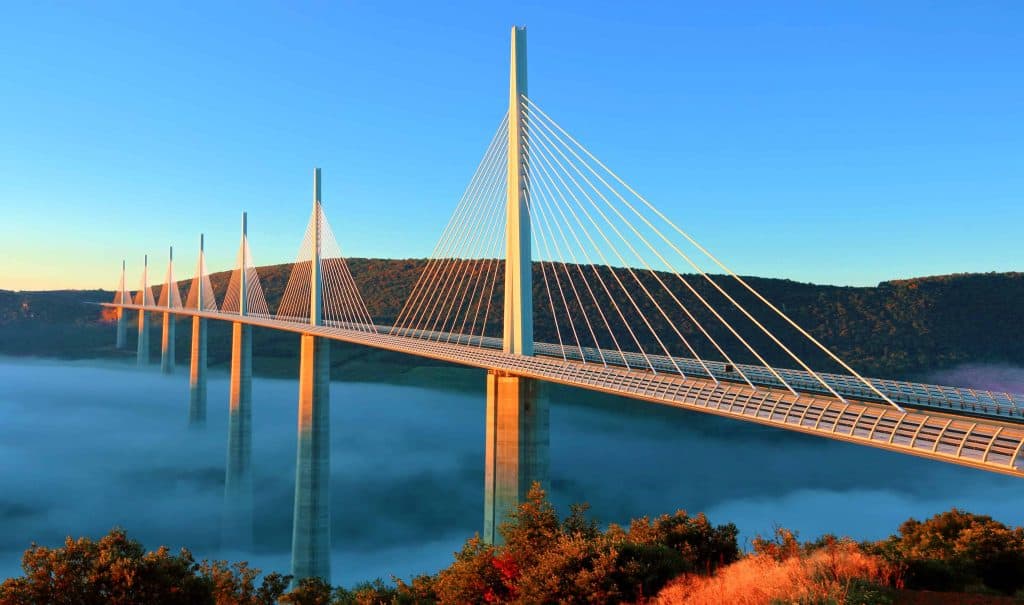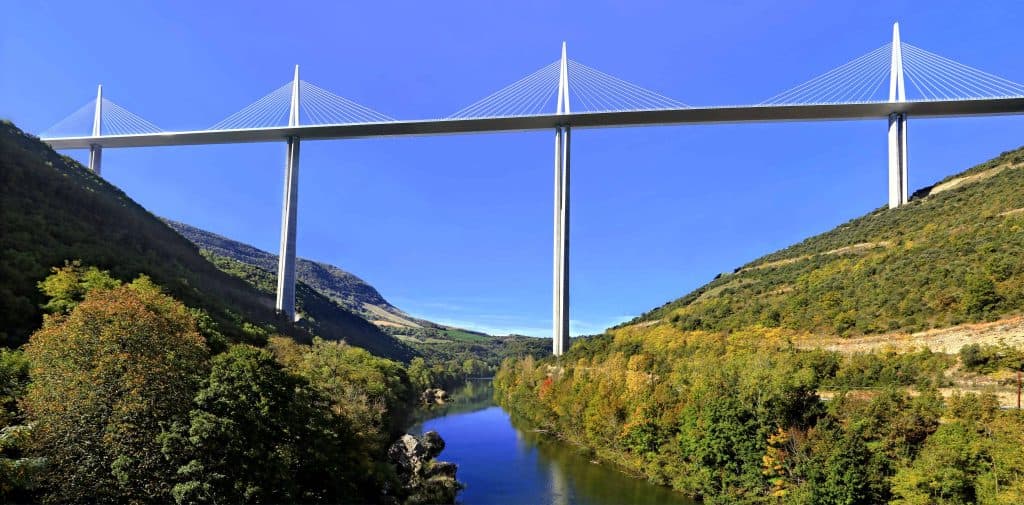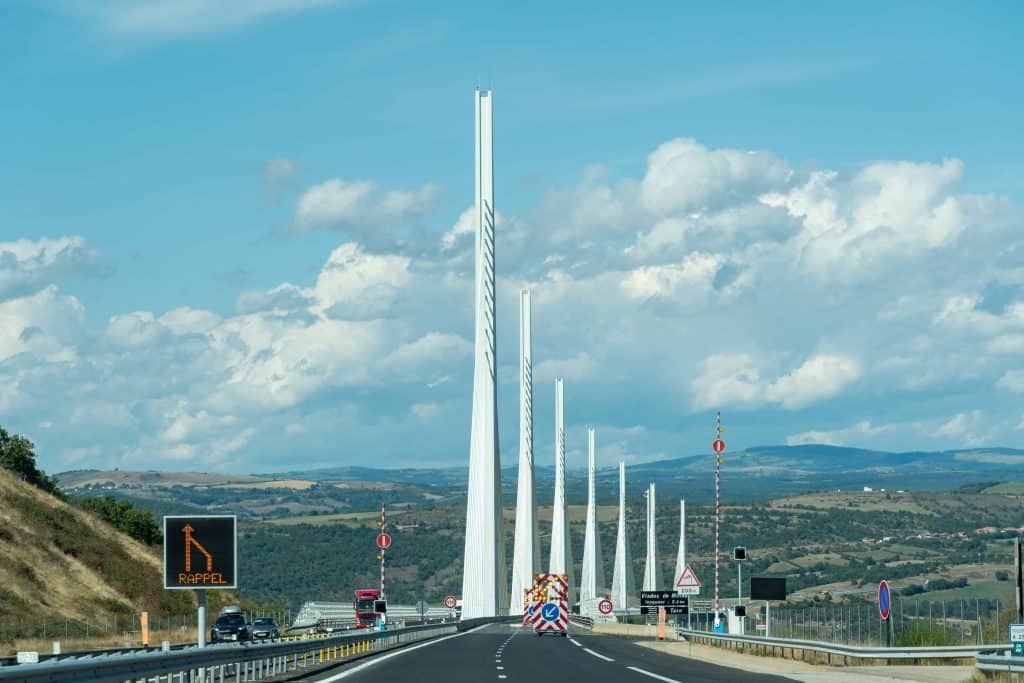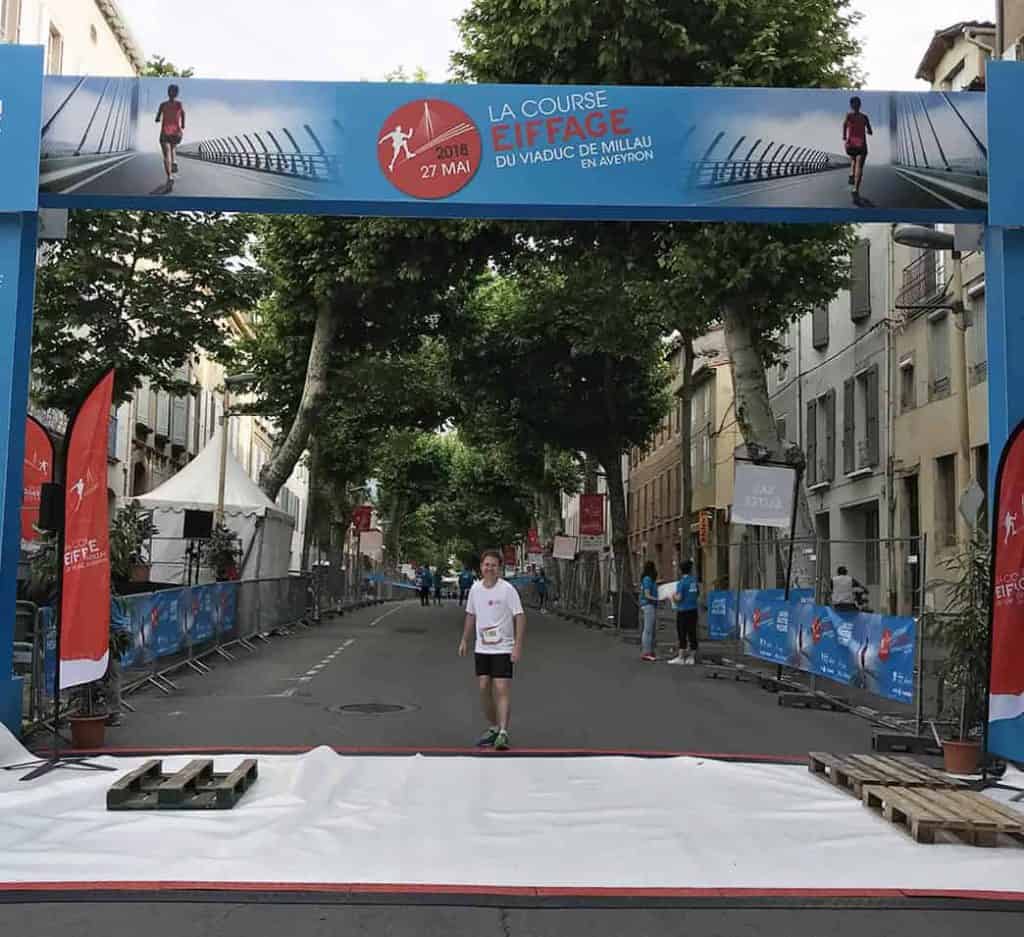
A User Experience Review of the Race Itself, not the Website
The beauty of the Viaduct of Millau has attracted hundreds of thousands of tourists, if not millions, since its inauguration in 2004 to see its majestic beauty. Whether rain or shine, it is a beautiful statement to French architecture and her countryside.
(Main photo credit: lamax – stock.adobe.com).
Race date on September 22, 2024
The Race Course Eiffage du Viaduc de Millau takes place biennially. I had the pleasure of running the race twice. First in 2014 and again in 2018. It has always been, and it was when I ran, a very fun and light-hearted race (but there are definitely many serious runners from around the world going after victory). Some runners dress up in costumes, and the organizers, Eiffage, put on a show that lasts the whole weekend.
Check out the photo gallery of past races to get a feel for the event.
After a long hiatus due to Coronavirus, the Course Eiffage of Viaduct of Millau is back in 2024.
The race will take place in September, and if you are in Southwest France during this period I highly recommend participating in the race. Whether you are an experienced runner or just want to have an experience of a lifetime, this could be the journey you need.
The ‘semi-marathon’ race itself offers many challenges as you start in ‘downtown’ Millau and you work your way toward the iconic bridge (though I should say viaduct as it crosses an immense valley). As the viaduct comes into view, though you have reached the halfway point fairly breezily, you realize you have started at the bottom of the valley and need to work your way up the approximately 300 meter elevation to the top of the bridge.
What would be a nice, lazy and scenic drive from low to high becomes a test of your endurance and commitment to getting to the bridge.

Crossing the Viaduct of Millau
At last, you arrive and begin to cross the bridge. It’s epic. As you cross the viaduct (after stopping to take photos nonetheless), it bounces to the rhythm of the runners. Unless, of course, you are in first place, which I humbly admit was not my position. I suppose I was somewhere lost in the middle of the pack… but in a way it was the best place to be. Runners on both sides of the bridge, with a concert halfway at the u-turn.

You can feel the engineering. And you look out and see the magnificent nature that the region offers. It’s truly a splendid and sublime moment. Even though there may be thousands of runners, you can sense your individualism against the beams and steel of the bridge. You can allow yourself to gape and to perhaps meditate while running. It truly is an experience of a lifetime.
Engineering strength and architectural beauty
This would be a good time to describe the Viaduct of Millau from an engineering perspective. It spans the Tarn River Valley near Millau in southern France and it is considered one of the most impressive modern bridges in the world. Here are some key details about its design and engineering:
- Completion and Purpose: The Viaduct of Millau was officially opened in December 2004. It was constructed to alleviate the heavy traffic congestion during the summer months on the route from Paris to Spain, and it forms part of the A75 autoroute from Clermont-Ferrand to Béziers and Montpellier.
- Design: The bridge was designed by the French structural engineer Michel Virlogeux and British architect Norman Foster. It features a sleek, streamlined aesthetic that enhances rather than overshadows the surrounding landscape.
- Dimensions: The Viaduct of Millau is the tallest bridge in the world, with one of its masts reaching a height of 343 meters (1,125 feet), which is slightly taller than the Eiffel Tower. The bridge is 2,460 meters (8,071 feet) long, with the longest single span being 342 meters (1,122 feet) and the maximum clearance below being 270 meters (886 feet).
- Construction: The bridge’s construction involved massive engineering feats. It consists of seven concrete piers of varying heights, with Pier P2 being the tallest at 245 meters (804 feet) — making it the tallest bridge pier in the world at the time of completion. The bridge deck is supported by 154 steel cables that are anchored on the piers, maintaining tension and providing stability.
- Materials and Techniques: Approximately 85,000 cubic meters of concrete, 19,000 tonnes of steel for the reinforced concrete, and 5,000 tonnes of pre-stressed steel for the cables and shrouds were used in the construction. Advanced techniques in wind tunnel testing and the use of computer simulations were crucial for ensuring the bridge’s aerodynamic stability and safety.
- Impact and Recognition: The Viaduct of Millau not only serves a practical purpose by improving traffic flow but also stands as a symbol of modern engineering and design. It has won numerous awards for its design and has become a tourist attraction in its own right, admired for both its aesthetic qualities and engineering brilliance.
Racing on a work of art
If you decide to run in the race, that is what you will be able to step on. Not just a bridge or viaduct, but a work of art.
After the bridge, it’s all downhill and back to Millau. By then, you are definitely exhausted, but a warm welcome from the organizers makes everything worth it.
This year there’s also a 12,8 Km track for those who are just starting out on their running career. 🏃🏻🏃🏼♀️🏁
Bonus paragraph
Here is the author on the day of the race, in 2018.

Ready, Set, Go (If I start before anyone else, I may just win this thing)! Credit: Guillaume Bellaval

The race is over, let’s have a photo op with the organizers! Credit: Guillaume Bellaval